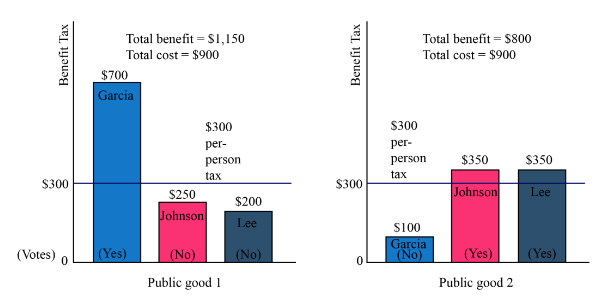Look back at Figures 5.2a and 5.2b, which show the costs and benefits to voters Garcia, Johnson, and Lee of two different public goods that the government will produce if a majority of voters support them. Suppose that Garcia, Johnson, and Lee have decided to have one single vote at which the funding for both of those public goods will be decided simultaneously.
a. Given the $300 cost per person of each public good, what are Garcia’s net benefits for each public good individually and for the two combined? Will she vote yes or no on the proposal to fund both projects simultaneously?
b. What are Lee’s net benefits for each public good individually and for the two combined? Will she vote yes or no on the proposal to fund both projects simultaneously?
c. What are Johnson’s net benefits for each public good individually and for the two combined? Will he vote yes or no on the proposal to fund both projects simultaneously—or will he be indifferent?
d. Who is the median voter here? Whom will the two other voters be attempting to persuade?



